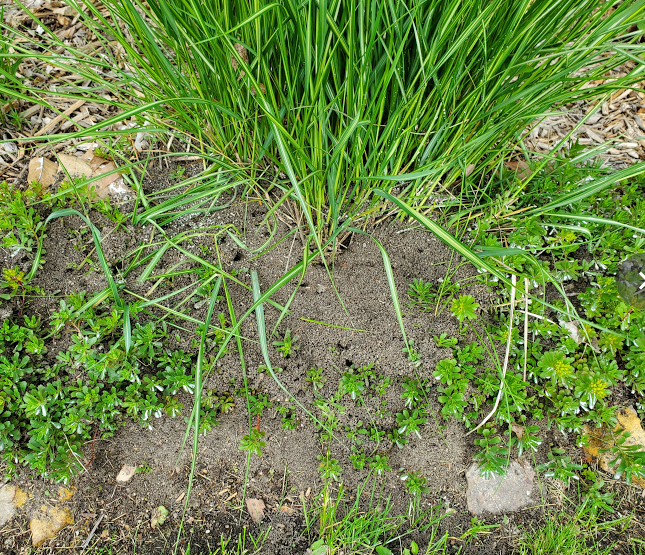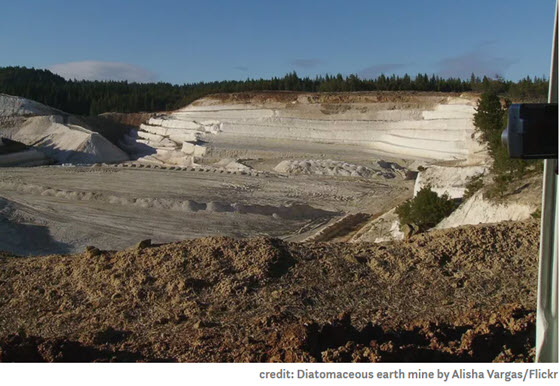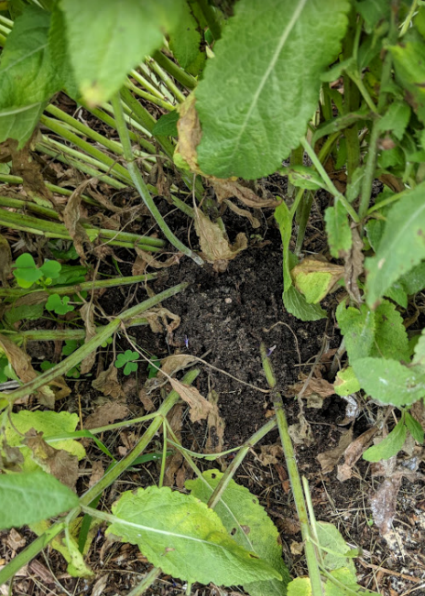Click below to listen to my 2 min. Garden Bite radio show/podcast: Diatomaceous Earth
Audio PlayerUGH, those ants just won’t stop. The little biters are still hanging out in my gardens. I weed and wind up with the little ankle biters.

I’ve tried diatomaceous earth multiple times. It looks like a white cloud and then IF there were rain, it just turns kinda gooey and loses any effectiveness it might have had.
What IS Diatomaceous Earth anyway?
Very basically it’s tiny water organisms that have fossilized. Their skeletons are made of a natural substance called silica.

It is mined for pest control as well as cleaning up spills, for insulation in industry, to scrub stuff. There are thousands of non-pesticide products that contain diatomaceous earth including skin care products, toothpastes, foods, beverages, medicines, rubbers, paints, and water filters. The Food & Drug Administration lists diatomaceous earth as “Generally Recognized as Safe”. “Food grade” DE products are purified. They may be used as anticaking materials in feed, or as clarifiers for wine and beer. 7 uses for Diatomaceous Earth.
Don’t breathe in DE if you’re using it to kill soft-bodied insects.
They are killed because they dry out, DE sucks out the moisture including their insects oils. While in certain circumstances, as you can read in the link above, drying out some oils can be useful but NOT with the DE packaged for pest control. If you DO decide to use it, please read the label. Some formulations can be very irritating to your respiratory tract.

Is diatomaceous earth a good product to use to kill ants? No. It didn’t work for me. Touted to kill many soft bodied insects, it’s really hit or miss. Although there seems to be evidence that slugs are more affected. That could be due to their surface size. That’s just my guess!
I’ve also used ant traps. Well, they did kill some ants, the others just packed their bags and moved down the lawn a few feet.

